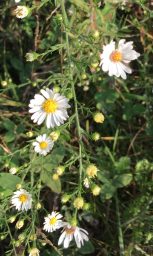
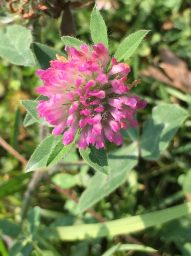
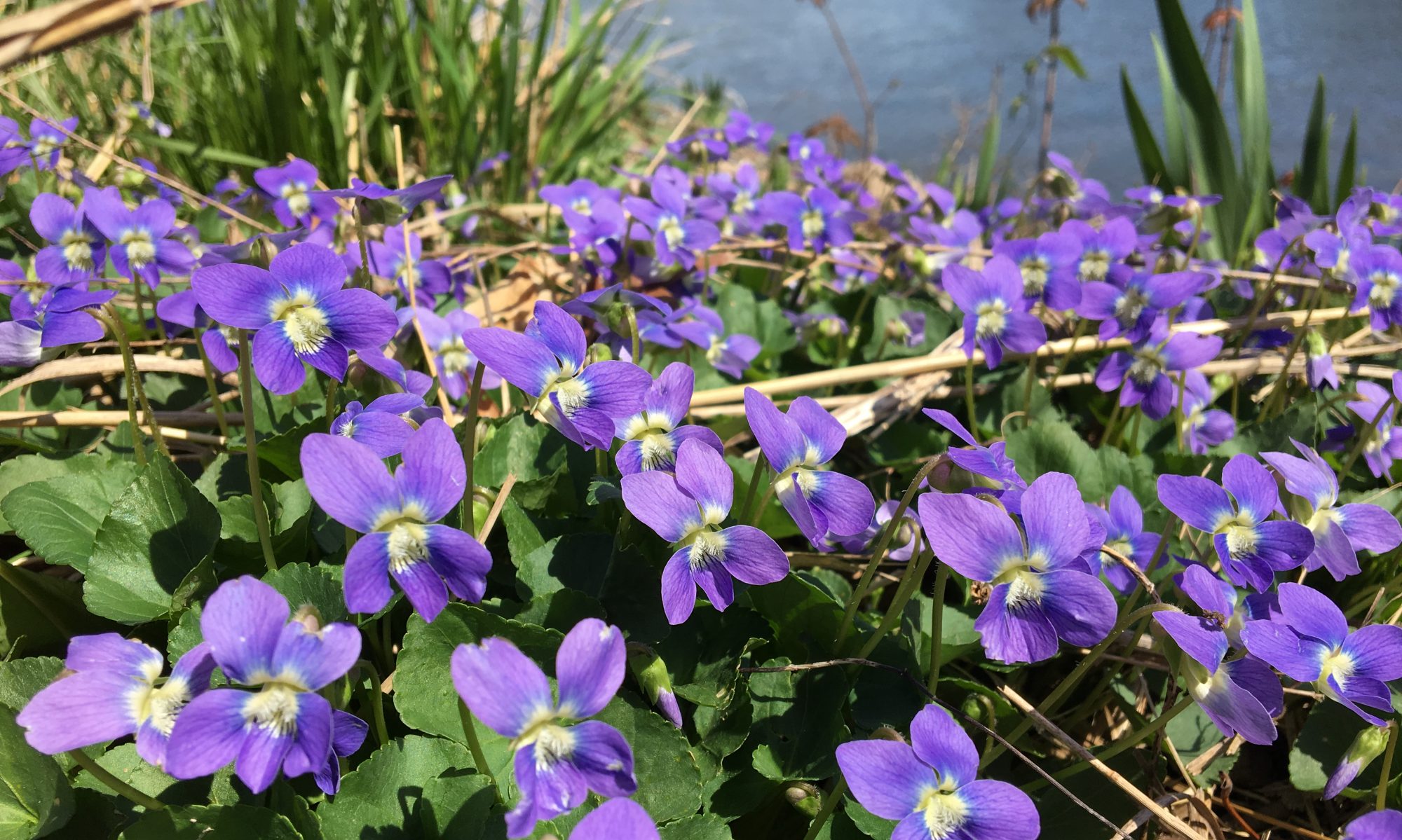
Wheaton, Illinois



Here is the link for info on Monarch Butterfly Way Station requirements and an application form. You can register online or print out the application: http://www.monarchwatch.org/waystations/
Here is a link for a listing of registered way stations, which can be filtered by city.: http://bit.ly/monarch-waystations
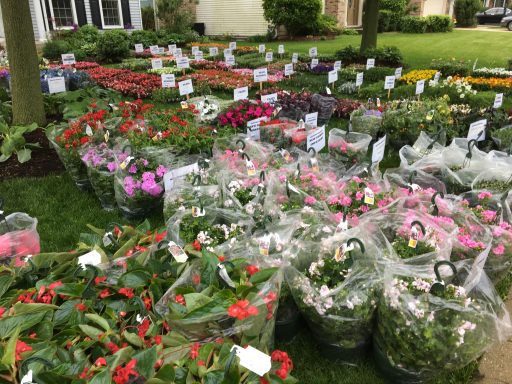 Its time to pick up your plants at the plant sale!
Its time to pick up your plants at the plant sale!
Herb Butter
Ingredients:
• 1 pound butter
•1/4 cup extra virgin olive oil
•3 tablespoons fresh chives, chopped
•2 tablespoon thyme, chopped
• 2 tablespoon sage, chopped
• 2 tablespoon rosemary, chopped
Instructions
1. First, chop the butter up into uniform chunks and set aside.
2. Pour the oil into the blender (or food processor) and add the herbs.
3. Process until finely chopped and the herbs have colored the oil a beautiful green color.
4. Pour the oil and herbs mixture out into a small bowl and add the butter to the blender (or to a stand mixer).
Process until soft and light in color (approximately 5 – 7 minutes in the stand mixer).
5. Add the herb oil to the butter and process for another 1 – 2 minutes until oil is fully incorporated.
6. Spoon butter onto plastic wrap.
7. Roll into a log and chill for 2 hours before serving.

WHEREAS, the City of Wheaton, located in north eastern Illinois, has long been on the annual monarch butterfly’s migration route of thousands of miles from Mexico to Canada and has provided monarch caterpillars with native milkweed species, their sole source of food; and
WHEREAS, the Wheaton City Code allows native landscaping which reduces storm water, emissions and pesticide/fertilizer run off and provides wildlife corridors; and
WHEREAS, Illinois designated the iconic monarch butterfly as the official state insect in 1975 as the result of lobbying by Illinois schoolchildren; and
WHEREAS, scientific studies point to the rapid decline of the monarch butterfly due to the loss of milkweed habitat needed to lay their eggs and for their caterpillars to eat, resulting from development, land management practices, and chemically-aided agriculture in the United States and Canada; and
WHEREAS, because the decimation of pollinators, including the North American monarch, which serves as an iconic species, has potential negative consequences for natural ecosystems, as well as for human food production, the U.S. Fish and Wildlife Service is currentl y studying the species to determine if it should be listed under the Endangered Species Act; and
WHEREAS, on a national level, conservation organizations such as the National Wildlife Federation and the U.S. Fish and Wildlife Service have undertaken efforts to reinvigorate milkweed and ot her nectar-producing plant s to help restore monarch habitat in open spaces a nd suburban and urban gardens; and
WHEREAS, because there are many different species of milkweed in the U.S., it is important to recognize that on l y native milkweed is vital to the restoration and survival of the monarch habitat in Illinois; and
WHEREAS, DuPage County Forest Preserve District, Ri ver Prairie Group of the Sierra Club, The Conservation Foundation and Wild Ones of Greater DuPage, a native plant advocacy group, are encouraging commu nities to plant native milkweed and valuable nectar plants where appropriate;
NOW, THEREFORE, I, Michael J. Gresk, do hereby proclaim the month of May to be Monarch Butterfly Month in Wheaton, direct the City to reduce the use of pesticides on City-owned land and encourage residents to create monarch way stations by purchasing attractive, site appropriate milkweed species for residential landscaping and protect pollinators by the reduction of pesticide use on residential , commercial and City owned property.
h
Adopted this 151 day of May 2017.
A message from the NGC President
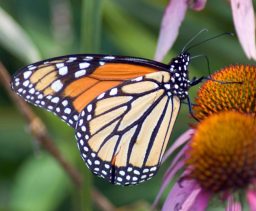
To all GCI members: This message came from our NGC President and we felt it was worth sharing!!
FROM: Sandy Robinson, President
DATE: April 27, 2017
SUBJECT: Milkweed
It has been brought to my attention that some “Big Stores” have been selling Milkweed plants that have been treated with systemic Neonicotinoids. This will kill caterpillars! Please, be aware and be on the lookout for these tags placed in plants. Please pass this information along to your garden club members!
See the below letter and picture I received from Mary Ellen Miller explaining the situation:
Dear Sandy, I know you are busy ending your term. We, in New Orleans, just hosted the Deep South and LGCF Conventions, but this needs immediate attention.
I purchased a Milkweed plant from Home Depot near my home and it wasn’t until I got home that I noticed the little information stick hidden behind the identification information that the plant had been treated with systemic Neonicotinoids. The container boasted how desirable the plant is for birds and butterflies. Yesterday I went to a different Home Depot and they had just put out an entire rolling cart of these plants, maybe about 100, all poisoned. I contacted the store manager and told him that it is the same as giving poison candy to kids on Halloween. This is THE host plant for the Monarch. My club, Shady Oaks and our junior club, Little Shadows have worked so hard to establish a Monarch Waystation and to educate people on the decline of the Monarch. I hate to think of the millions of poison Milkweed being distributed nationwide by Home Depot.
The container says distributed by Home Depot, 2455 Paces Ferry Rd N. W., Atlanta , Georgia.
I contacted the LSU Ag Agent for New Orleans, Dr Joe Willis. He said the Neonicotinoids will dilute as the plants grow but that only a very small amount will kill the larva of the Monarch. He is contacting the Master Gardeners of the area. I contacted the newsletters of the Jefferson Parish Council of Garden Clubs and the Federated Council of New Orleans Garden Clubs to ask that they send a notice to our local members. I contacted a local GOA club and the president said she would inform her members. I contacted our LGCF President and our Environmental School Chairman with the information.
We need a notice to Home Depot from a national source. I contacted the Monarch Watch organization ,www.MonarchWatch.org/ws at the University of Kansas (1200 Sunnyside Avenue, Lawrence, KS 66045) . The Little Shadows Junior Garden Club registered our Monarch Waystation with them.
Sandy we need a response from NGC to this issue. It needs to be sent soon as these plants are being sold now to well meaning people who are wanting to help the Monarch not kill them. I know you are very busy but I hate to think of the billions of plants being sold nationwide and how that will cancel the efforts of so many to stop the demise of the Monarch. Could you please help?
Mary Ellen Miller
Shady Oaks Garden Club , LGCF District II
Moderator Little Shadows Junior Garden Club
Immediate Past President Federated Council of New Orleans Garden Clubs Inc.
As always we use this form of contact to reach as many of our members as we can in between issues of our award winning magazine
Garden Glories
May is the perfect time to divide perennials. There are lots of reasons to divide perennials in your garden. Among them are:
• Keep them Healthy. Many perennials grow quickly, forming large clumps. If you don’t divide them every three to four years, these clumps can die out in the middle, leaving a bare hole
• Protect plants for fungal diseases and insect infestation
• Keep them beautiful. Overcrowded perennials often have fewer and/or smaller flowers than their well-spaced and divided counterparts. If your perennials are drastically in need of division, they may even appear stunted.
• Keep them in bounds. Some perennials are especially vigorous or eve aggressive. Dividing these plants will keep them form overwhelming their neighbors.
• Make more plants. Dividing perennials leaves you with more plants of the same variety-perfect for adding to other places in the garden or trading with friends, family or neighbors.
While you can divide most perennials any time from spring to fall, those two seasons are the best. This is because dividing your perennials can be stressful to the plants—and they’ll recover better from the shock in cool, moist conditions. That said, if you want to divide your favorite perennials in summer, be sure to keep them well water afterward.
Here is an example of dividing a “clump” plant:
• Dig up the clump of perennials to be divided by inserting the shovel deep into the soil around the perimeter to loosen roots and isolate the clump. Here is a hint: Watering the perennial a couple of days before you dig will soften the soil and maybe save some effort.
• Once you dig the plant out of the ground, shake, wash, or brush any excess soil form around the root ball. This make it easier to pull the clump apart.
• Pry or cut apart individual crowns. Each clump needs to have sets of leaves and roots in order to grow.
• Then replant the divisions promptly so the roots don’t dry out. Plant as the same depth as before and water well. Cover the soil with mulch to help conserve moisture while your new divisions become established.
While most perennials benefit from being divided every few years, there are a few that don’t. Avoid dividing these varieties:
Baptisia, Bleeding Heart, Butterfly Weed, Christmas Rose, Lavender, Oriental Poppy
Divide every 3-4 Years:
Black-eyed Susans, Daylilly, Hosta, Peony, Phlox, Purple Coneflower
Divide every 2-3 years:
Aster, Blanket Flower, Campanula, Coreopsis, Lamb’s Ear, Yarrow
Here are the before and after photos of Cheryl’s winnings at Bulb Bingo, our program last October.
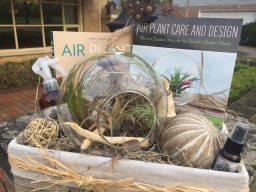 This lovely Air Plant themed gift basket, designed by our members Laura Christensen and Cheryl Weber will be auctioned off at the GCI Luncheon as part of their fundraising efforts.
This lovely Air Plant themed gift basket, designed by our members Laura Christensen and Cheryl Weber will be auctioned off at the GCI Luncheon as part of their fundraising efforts.
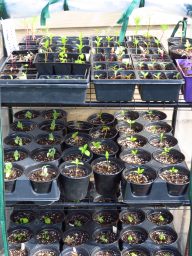 My greenhouse is full!
My greenhouse is full!